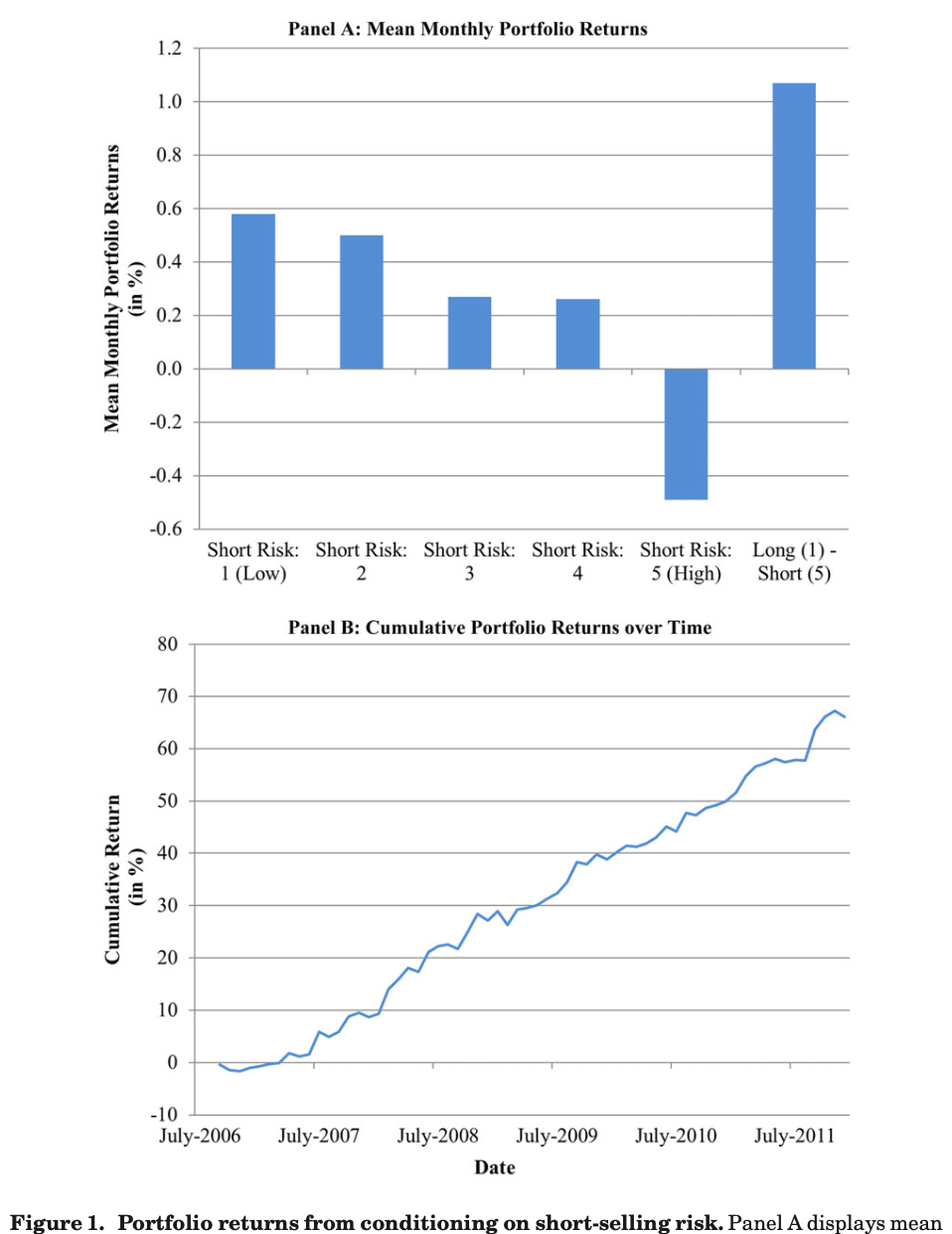💡 Takeaway:
Short-selling risk—especially the variance of future loan fees—is a strong return predictor and source of persistent mispricing. It’s a true limit to arbitrage, particularly when trades require long horizons.
Key Idea: What Is This Paper About?
This paper introduces and tests a dynamic measure of short-selling risk based on the forecasted variance of equity loan fees. Unlike static proxies (like current borrow fees), this forward-looking risk constrains arbitrage and limits short-seller participation. Stocks with higher short-selling risk have lower returns, higher pricing errors, and lower trading volume, even after controlling for short interest. The effect is stronger when trades take longer to resolve.
Economic Rationale: Why Should This Work?
📌 Relevant Economic Theories and Justifications:
- Limits to Arbitrage (Shleifer & Vishny, 1997): Risk of being bought in or facing fee spikes deters arbitrage.
- Loan Recall and Fee Volatility: Borrow costs change unexpectedly, eroding profits.
- Holding Horizon Risk: Mispricing that requires long horizons is especially unattractive to short sellers.
- Price Efficiency Impairment: Higher short-selling risk leads to slower information incorporation.
📌 Why It Matters:
Explains why short interest remains a strong return predictor despite being public—because many can’t or won’t act on it due to dynamic borrowing risks.
Data, Model, and Strategy Implementation
Data Used
- Period: July 2006 – Dec 2011
- Equity Lending Data: Markit
- Market Data: CRSP, Compustat, OptionMetrics, TAQ
- Options Data: Used for put-call parity tests
- Sample Size: 220,000 firm-months, ~4,500 US stocks
Model / Methodology
- ShortRisk: Forecasted variance of loan fees using lagged lending + firm data
- Forecasting Inputs:
- Variance of new loan fees and utilization
- Tail risk proxies (99th percentile)
- Fails-to-deliver, IPO flag, option presence, volatility
- Portfolio Sorts: Quintiles on ShortRisk
- Tests:
- Fama-MacBeth regressions
- Five-factor alphas
- Price delay (Hou & Moskowitz, 2005)
- Put-call parity arbitrage (long horizon test)
Trading Strategy (From ShortRisk Signal)
- Long: Low ShortRisk stocks (more liquid to short)
- Short: High ShortRisk stocks (costlier/riskier to short)
- Rebalancing: Monthly
- Filters: Can overlay with short interest, size, or mispricing signals
- Enhancement: Focus on Micro/Small caps and long-horizon mispricings (e.g., put-call parity deviations)
Key Table or Figure from the Paper

📊 Reference: [Figure 1] – Long-Short Portfolio Returns by Short-Selling Risk
📌 Explanation:
- Shows monthly and cumulative returns to a strategy that buys low ShortRisk stocks and shorts high ShortRisk ones.
- Annualized alpha: 9.6%
- FF5-adjusted alpha: 0.80%/month
- Effect is not subsumed by short interest
- Impact is strongest for small caps and long-duration arbitrage setups
Final Thought
💡 Short-selling risk is the friction that keeps mispricing alive—even when it’s visible to all. 🔍📉
Paper Details (For Further Reading)
- Title: Short-Selling Risk
- Authors: Joseph Engelberg, Adam Reed, Matthew Ringgenberg
- Publication Year: 2018
- Journal/Source: Journal of Finance
- Link: https://doi.org/10.1111/jofi.12601
